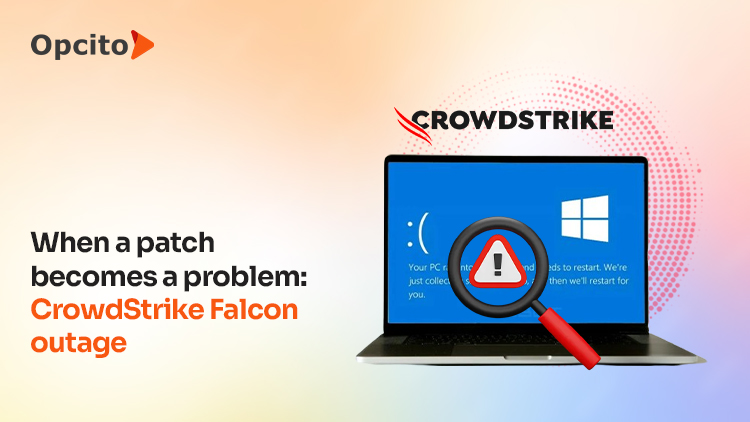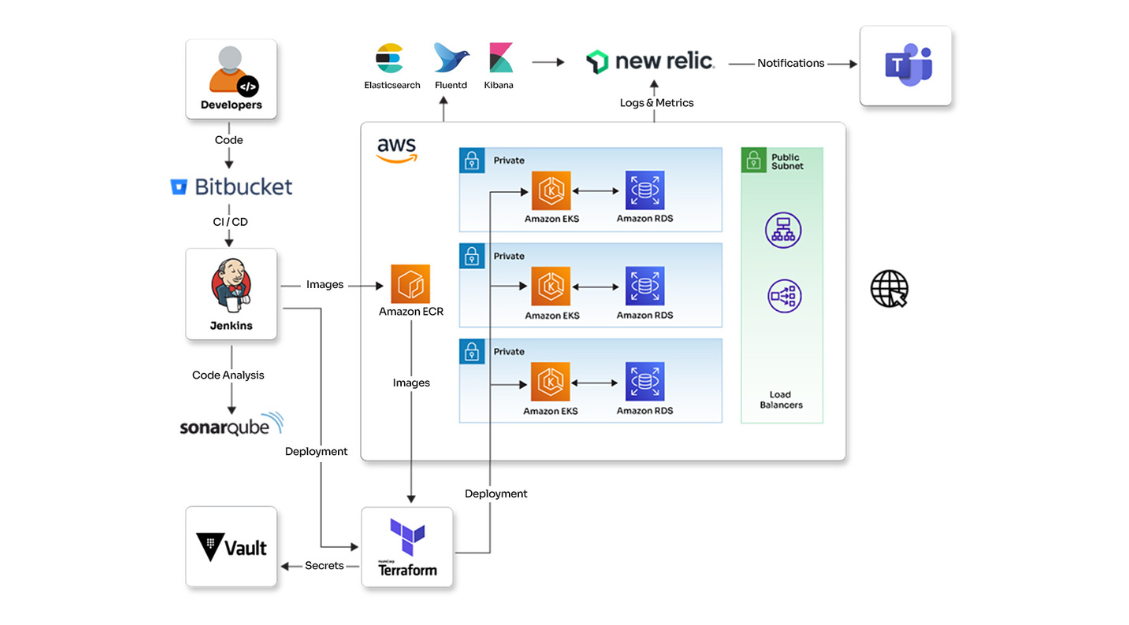Augmenting CloudOps with Cloud Incident Response
Augmenting CloudOps with Cloud Incident Response
The pandemic forced the world to discover new ways to deal with almost everything. It also changed the way we work. While we are all settled in "the new normal" - work from-home scenario, it has forced organizations to put extra effort into security aspects of the business. Most of these security threats have resulted from a lack of visibility into the nature of threats and security practices.
Simplifying AWS environments with AWS Landing Zone and Control Tower
Simplifying AWS environments with AWS Landing Zone and Control Tower
A lot has been spoken and written about the cloud and the advantages it offers. However, with all these benefits, there are some complexities that one needs to deal with; the major one is the separation of resources based on the use case.
Cloud Governance for Cloud Coherence
Cloud Governance for Cloud Coherence
"Cloudify everything" seems to be the mantra for major enterprises. The adoption has become the new normal, and the trends of IT expenses show that cloud is one of the fastest-growing segments.
From "Cloud-first" to "Cloud-smart" with Hybrid Multi-cloud
From "Cloud-first" to "Cloud-smart" with Hybrid Multi-cloud
Cloud has been at the forefront of the digitalization of everything. It changed the way applications are developed, stored, and consumed. Factors like changing market trends, accelerated development demands, increasing pressure on existing infrastructure & processes, and creating environments that will improve cost-effectiveness further added fuel to the cloud adoption trend. Cloud providers are coming with newer feature-rich technologies, strategies, and delivery models to increase their respective market shares.
Compose to Kubernetes simplified with Kompose
Compose to Kubernetes simplified with Kompose
Containers started their journey way back in the late 70s. However, application containerization really started gaining momentum at the beginning of the last decade, and it has been up since then. With the advent of Docker and Kubernetes, most of us started deploying and scaling on distributed platforms using containers. Once the application is containerized, then arises the big question of what next? There are some easy-to-go options.
DevOps, Security challenges, Passwords, and DevSecOps
DevOps, Security challenges, Passwords, and DevSecOps
DevOps culture is rapidly gaining popularity. when it comes to application delivery. The main reason behind this is the inherent advantages it offers over the traditional methods. According to previous predictions by Markets and Markets, with rising interest from organizations across all industries, the DevOps software market is foreseen to increase to USD 10.31 Billion by 2023.
AWS AppStream 2.0: An easy way to stream your desktop applications
AWS AppStream 2.0: An easy way to stream your desktop applications
Remote working seems to have become the new normal since the start of 2020. While working on a crucial and confidential project from remote locations, the engineers are often required to log in to remote desktops or remote servers to use the dedicated applications. This requires applications to be installed on the server with all the components needed to use the application. It can be a cumbersome task, as your system or laptop should be capable enough to run the remote server and use the desktop app seamlessly.
DevOps: Days of Future Past
DevOps: Days of Future Past
Technological advancements enabled fast-paced business environments. And to cope with the delivery speed needs of the speedy business environments, traditional development practices were never going to be enough. Thankfully, most of us realized that and replaced the traditional top-down, rigid, and hierarchy-oriented delivery models with a cultural change that involved better coordination between Ops and Devs. All types and sizes of organizations are embracing DevOps for faster software delivery, improved ROI, and better functionality.
Infrastructure migration, automation, and monitoring for a CLM application
See how Opcito set up infrastructure migration, automation, and monitoring for a CLM application
Engagement details
The client has one of the leading contract lifecycle management solution for the legal and business needs of their 500+ enterprise customers. It was becoming a challenge to manage and automate the existing application infrastructure, that was on Rackspace. The reason behind this was the limitations of available expertise and resources. The client was looking for a multi-tenant infrastructure capable of automating the complete production and deployment with a build optimization strategy. Opcito suggested migrating from Rackspace to AWS infrastructure and highlighted the automation possibilities with AWS by leveraging some of the AWS services like AWS RDS & Blue-Green Deployment combined with Jenkins, Chef, and MongoDB.
Technologies
Cloud migration, product engineering, CLM
Benefits
- Reduced infrastructure expenditure by 55%.
- Reduced new client onboarding time by 27% with faster and streamlined lifecycle management.
- Zero downtime and continuous check on the environmental health status with a robust centralized logging and monitoring system.
Subscribe to our feed
Word add-in for a matter management platform
See how Opcito set up a Word add-in for a matter management platform
Engagement details
The client has one of the leading contract lifecycle management solutions for the legal and business needs of their 500+ enterprise customers. Most enterprises using the client's CLM solution use Microsoft Office as their word processing and data management platform. The enterprise customers were eager to see if a Word Add-in feature could be integrated into the existing contract and matter management solution for convenience. The client approached Opcito to assist them in building the plug-in and developing additional 3rd party integration to deploy in customer environments. After carefully considering and analyzing the existing setup, the Opcito team decided to use ReactJS, Bootstrap, Office UI Fabric, Axios, and CSS technologies to develop the plug-in.
Technologies
Product engineering, Product sustenance, CLM
Benefits
- Improved customer experience for matter management product by additional features
- Great search and modification functionality aligned to the core product offering
- Advanced UI to perform the search operation faster and better.










